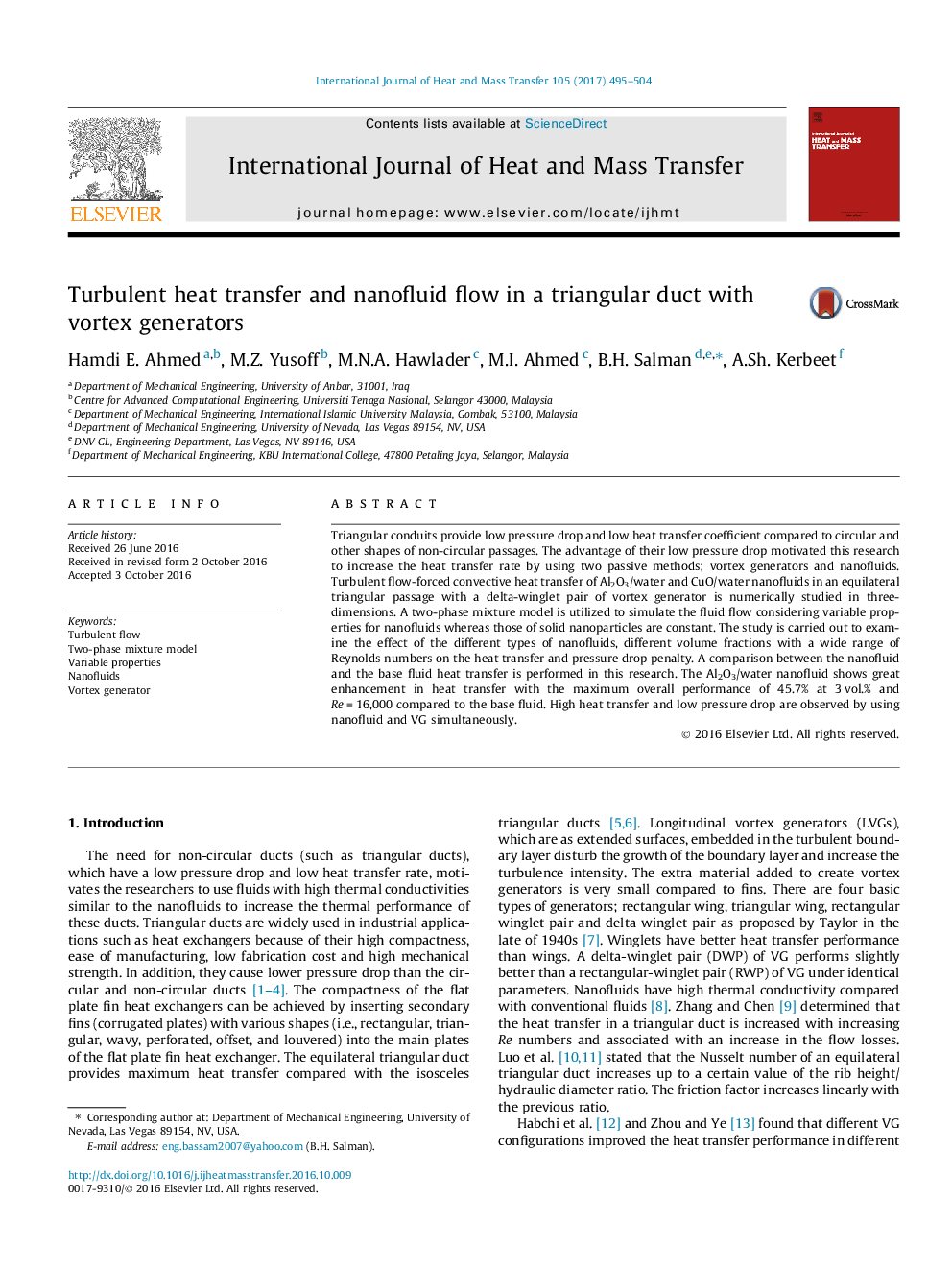| Article ID | Journal | Published Year | Pages | File Type |
|---|---|---|---|---|
| 4994709 | International Journal of Heat and Mass Transfer | 2017 | 10 Pages |
Abstract
Triangular conduits provide low pressure drop and low heat transfer coefficient compared to circular and other shapes of non-circular passages. The advantage of their low pressure drop motivated this research to increase the heat transfer rate by using two passive methods; vortex generators and nanofluids. Turbulent flow-forced convective heat transfer of Al2O3/water and CuO/water nanofluids in an equilateral triangular passage with a delta-winglet pair of vortex generator is numerically studied in three-dimensions. A two-phase mixture model is utilized to simulate the fluid flow considering variable properties for nanofluids whereas those of solid nanoparticles are constant. The study is carried out to examine the effect of the different types of nanofluids, different volume fractions with a wide range of Reynolds numbers on the heat transfer and pressure drop penalty. A comparison between the nanofluid and the base fluid heat transfer is performed in this research. The Al2O3/water nanofluid shows great enhancement in heat transfer with the maximum overall performance of 45.7% at 3 vol.% and Re = 16,000 compared to the base fluid. High heat transfer and low pressure drop are observed by using nanofluid and VG simultaneously.
Related Topics
Physical Sciences and Engineering
Chemical Engineering
Fluid Flow and Transfer Processes
Authors
Hamdi E. Ahmed, M.Z. Yusoff, M.N.A. Hawlader, M.I. Ahmed, B.H. Salman, A.Sh. Kerbeet,
